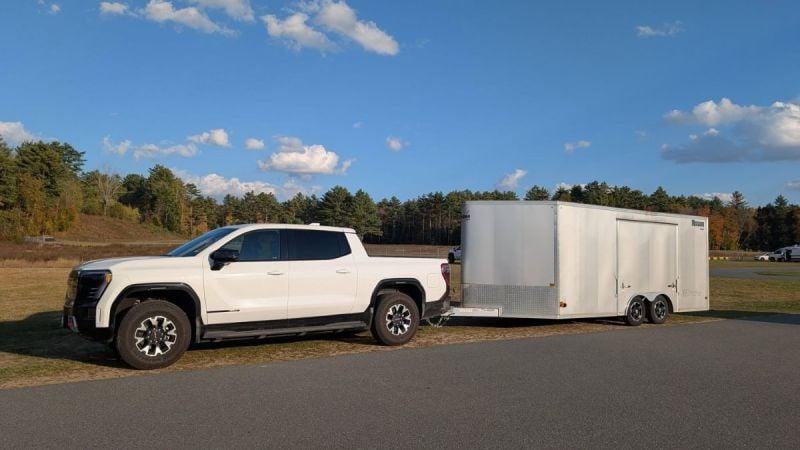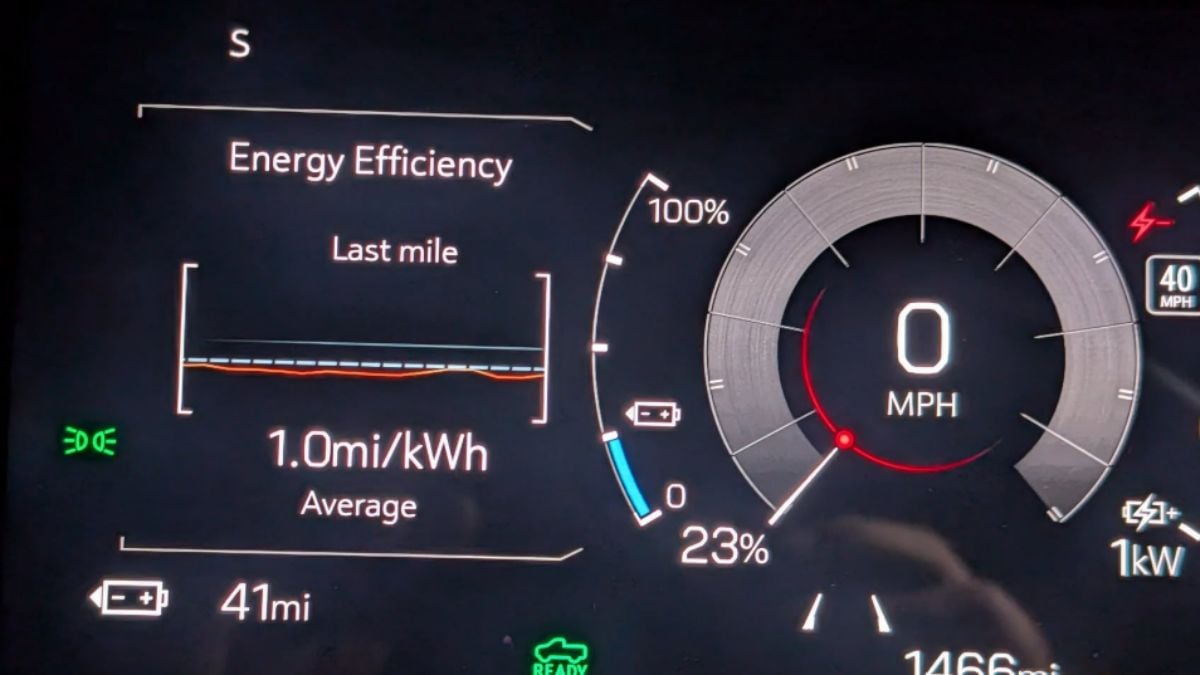I Bought My GMC Sierra EV AT4 to Replace My Silverado 3500HD, But My First Towing Trip Showed Me Just How Fast EV Range Can Disappear
When this GMC Sierra EV owner hitched up a trailer for the first time, his drive turned into a real-world test of patience and physics, showing how towing can turn EV range from a number into a challenge.

Posted: October 14, 2025 - 5:53PM
Author: Aram Krajekian
Advertising

Follow us today...    
Advertising
Every electric truck owner eventually faces a reality check of the moment where the numbers on the screen stop being theoretical and start defining whether you’ll actually make it home. It’s the kind of moment that separates expectations from reality and shows what living with an EV really looks like beyond brochures and marketing talk. This evening, while scrolling through the “GMC Sierra EV Group” on Facebook, I came across a story that perfectly captured that reality from a real owner’s perspective. For Josh Pollak, this moment came during his first towing trip in his GMC Sierra EV AT4 Extended Range, a truck he bought specifically to replace his Chevrolet Silverado 3500HD. What started as a confident 120-mile trip through rural New Hampshire quickly became a nerve-testing exercise in energy management, trip planning, and trust in new technology.
“I used the truck for towing for the first time. It's an AT4 Extended Range. I bought it specifically for this purpose to replace my 3500HD Silverado.
I had to go 120 miles and was only able to get up to 87% charge when I left. The truck showed 366 miles before the trailer was plugged in and 201 after I plugged it in. No problem I thought, as 80 miles of range to spare is great.
As I drove the range estimate started to plummet, and about halfway there I was going to arrive with 40 miles to spare. 3/4 of the way there I was going to arrive with 5 miles to spare. This was at night in an unpopulated area of New Hampshire so there were no chargers around, especially no pull through fast chargers.

Thankfully, on the map, I spotted a short cut off the highway that shaved 20 miles off the route at the expense of some twisty roads and a few miles of dirt road. I took the chance and made it to my destination with 17 miles to spare, which went up to 35 when the trailer was disconnected. A few miles from my destination, the ‘charge soon’ warning came on the dash.
I was able to charge to 95% for the trip home, and the truck estimated 180 miles of range. I guess it learned a bit. I took a different route home that was slightly shorter and made it home with 23% charge and 41 miles to spare with the trailer plugged in.
Looks like I averaged about .9mi/kwh on the way there and 1.0mi/Kwh on the way back, which isn't great but the trailer is tall. The truck reminds you to put it in tow/haul mode but doesn't do it for you automatically which is silly. I forgot to do it on the way back, and I wonder if it would have been more efficient if I had. If anyone knows best how to find pull through chargers please let me know.”
It’s a story that perfectly illustrates the trade-offs of switching from diesel to electric for towing. Josh’s Sierra EV performed admirably in terms of torque and control, but the rapid drop in range shows the kind of planning required for long hauls. He ended his post with a question about locating pull-through chargers, which is an issue that many EV truck owners continue to face.
Community Reactions
Shea Styer offered a helpful suggestion regarding the charger issue: “Plugshare has a filter for pull-through/trailer friendly chargers. I definitely recommend it when planning out longer trips where you may need to charge.”
It’s a reminder that preparation tools are evolving right alongside electric vehicle technology. These new tools are transforming towing into a smarter, more data-driven process that empowers drivers to make better decisions before they ever leave the driveway.
Joshua Bukoffsky chimed in next, asking, “How heavy was the trailer?” Josh responded that it was around 5,000 to 5,500 pounds, adding that “range is more about wind resistance I think.”
His observation makes perfect sense. While weight affects efficiency, aerodynamic drag is often the biggest factor in how quickly an EV’s range disappears. Taller, box-shaped trailers create significant air resistance, forcing the battery to work harder to maintain speed. As I discussed in another story about a driver who switched from a 3500HD to a Sierra EV Max Range, electric trucks can be incredibly efficient under the right conditions, but towing tall loads at highway speeds quickly changes that equation. |











